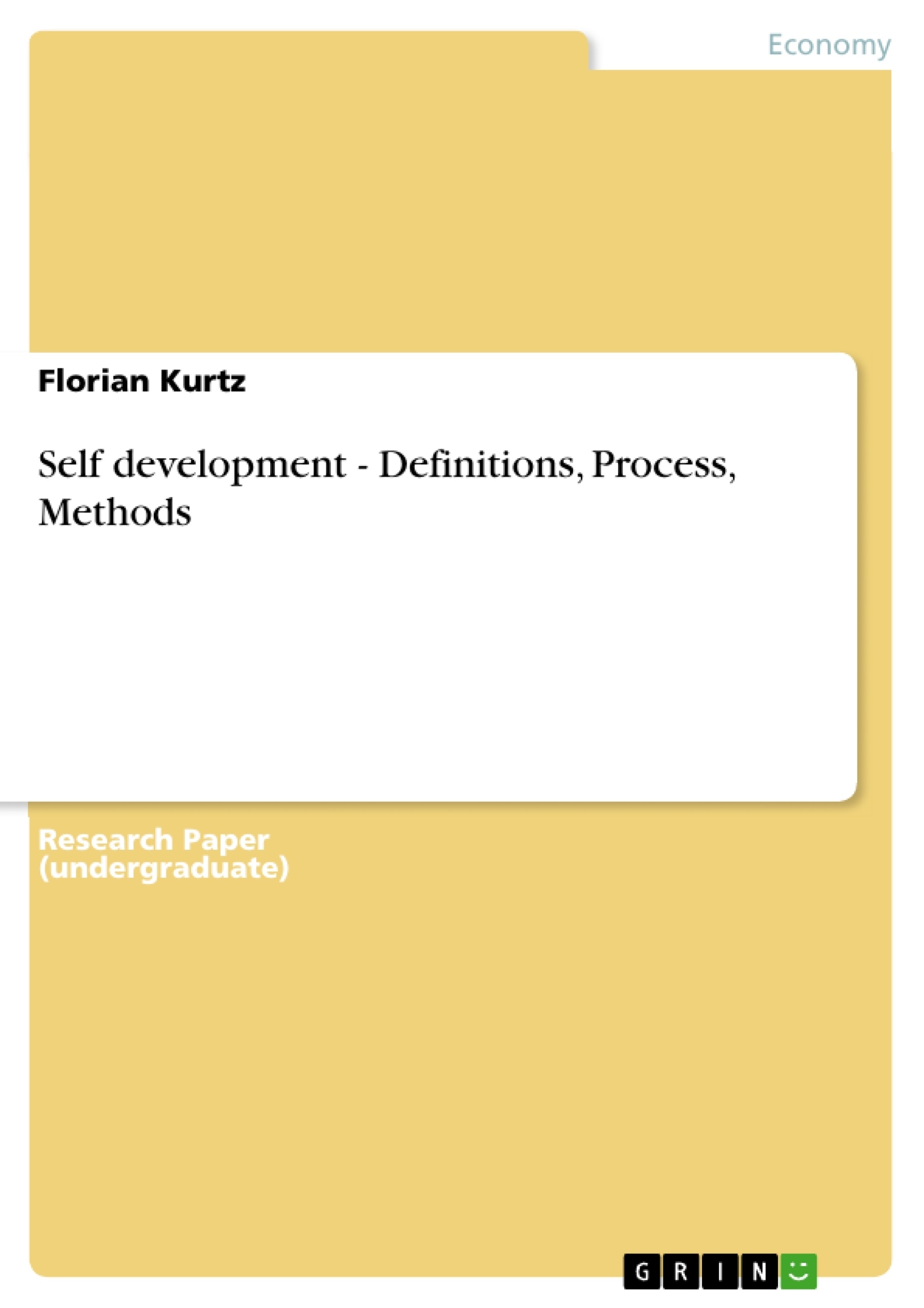In the Course Book 1 Reader of this Leadership Course we can read:
“Development is always self-development. Nothing could be more absurd than for the enterprise to assume responsibility for the development of a person. The responsibil-ity rests with individuals, their abilities, their efforts.”
Based on this statement, this assignment deals with the process of self-development and the methods by which this process can be supported and performed.
In times of dynamically and fast changing requirements in a rapidly changing world, it is becoming increasingly important for all people to improve skills and acquire new skills.
Therefore, the need for self-development is increasing more and more. This assign-ment will give an overview of the topic of self-development with its process and meth-ods.
Table of Contents
- 1 Introduction
- 2 Definitions
- 2.1 Self development
- 2.2 Target of self development
- 3 Process of self development
- 3.1 Cycle of self development
- 3.2 Self-assessment
- 3.3 Action planning
- 3.4 Do
- 3.5 Monitoring & review
- 4 Methods of management development
- 5 Resume and perspective
Objectives and Key Themes
The objective of this assignment is to explore the process and methods of self-development within the context of leadership. It aims to define self-development, outline its process, and explore relevant methodologies for improvement.
- Defining Self-Development
- The Process of Self-Development
- Self-Assessment and Action Planning
- Methods of Management Development
- Review and Reflection
Chapter Summaries
1 Introduction: This introductory chapter likely sets the stage for the entire assignment, providing a brief overview of the topic of self-development in the context of leadership and outlining the structure and scope of the following sections. It probably introduces the key concepts and questions that will be addressed throughout the paper. The introduction may also briefly mention the author's personal goals or perspectives on self-development.
2 Definitions: This chapter delves into the core definitions of key terms, most importantly "self-development" and its target, establishing a clear understanding of the fundamental concepts that form the basis of the entire study. It provides a conceptual framework for the subsequent analysis, clarifying the specific meaning of "self-development" as used in the context of this paper. The chapter will likely differentiate self-development from related concepts, and may analyze the various aspects and goals of self-development.
3 Process of self development: This chapter constitutes the core of the work, describing the practical steps and stages involved in the self-development process. It outlines a cyclical model which probably consists of phases such as self-assessment, planning, action, and review. The chapter elaborates on each stage, potentially including detailed methodologies, tools, and techniques for effective self-development, creating a step-by-step guide for personal growth in leadership. It likely also includes a discussion of the relationship between each stage and how they build on each other.
4 Methods of management development: This chapter likely explores various methods and techniques used in management development, examining approaches that facilitate self-improvement within organizational leadership contexts. It probably assesses the effectiveness of different methods and may compare and contrast their applications and suitability. This chapter's purpose is to expand on the practical strategies discussed in the previous chapter, providing a broader range of tools and approaches for personal and professional development in management.
Keywords
Self-development, leadership, self-assessment, action planning, management development, personal development plan (PDP), SMART goals, monitoring, review.
Frequently Asked Questions: A Comprehensive Language Preview on Self-Development
What is this document about?
This document is a comprehensive preview of a text focusing on self-development within the context of leadership. It includes a table of contents, objectives and key themes, chapter summaries, and keywords. The document aims to explore the process and methods of self-development, defining its core concepts and outlining practical steps for improvement.
What are the key themes explored in this document?
The key themes revolve around defining self-development, outlining its process (including self-assessment and action planning), exploring various methods of management development, and emphasizing the importance of review and reflection. The document uses a cyclical model to illustrate the self-development process.
What is the structure of the document?
The document is structured into five chapters: An introduction setting the stage; a chapter defining key terms like "self-development"; a core chapter detailing the process of self-development, including self-assessment and action planning; a chapter exploring various methods of management development; and a concluding chapter summarizing the findings and offering a perspective.
What are the main stages of the self-development process described?
The self-development process is presented as a cycle encompassing several key stages: self-assessment, action planning, taking action ("Do"), and monitoring and review. These stages build upon one another in a continuous loop of improvement.
What methods of management development are discussed?
While the specific methods aren't detailed in this preview, the document indicates that it explores various methods and techniques used in management development, examining approaches that facilitate self-improvement within organizational leadership contexts. It likely compares and contrasts the effectiveness of different approaches.
What are the key terms and concepts used in this document?
Key terms include self-development, leadership, self-assessment, action planning, management development, personal development plan (PDP), SMART goals, monitoring, and review.
What is the intended audience for this document?
The intended audience appears to be individuals interested in self-development, particularly within the context of leadership roles. The structured and professional approach suggests it's aimed at academics or those engaged in professional development.
Where can I find more information?
This document provides a preview; the full text would contain detailed information on the topics discussed.
- Quote paper
- Florian Kurtz (Author), 2012, Self development - Definitions, Process, Methods, Munich, GRIN Verlag, https://www.grin.com/document/190316




